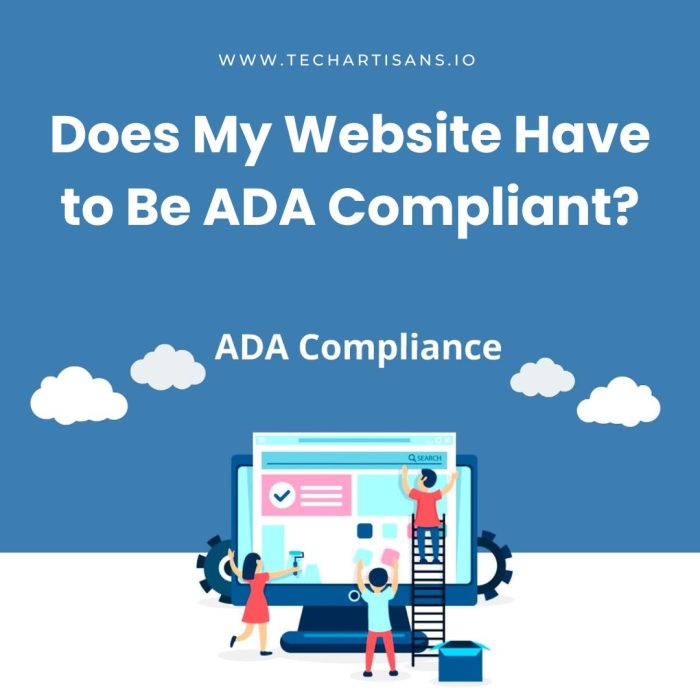ADA means Americans with Disabilities Act. This Act was approved in 1990 to ensure that businesses and organizations were accessible to people with disabilities.
In this era of digital innovation where hundreds of thousands of new websites are being created every day, ensuring that a website is accessible to special or disabled people is not only preferable but it’s required by the law now. Here’s a guide to future-proofing your website for more insights.
History of Americans with Disabilities Act
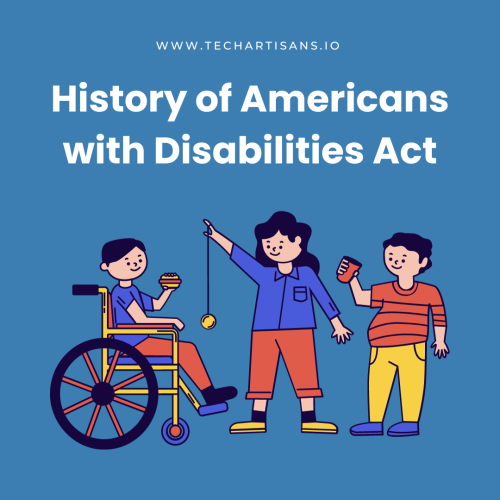
When people began to challenge the social barriers that disabled people faced, the ground was set for the ADA compliance act. The credit of ADA approval does not go to one person, organization, government, or the president of the United States, it goes to each and every person who stood up against the barriers and challenged the social norms that were faced by disabled people.
The Americans with Disabilities act was signed into law by President George Bush on July 26, 1990. At the time the internet was not as the norm as it is today. In fact, it was at least a decade after the signing of this act that people started to use the internet in their daily lives as they do today.
This act was first signed purely for the physical, and not for the digital world. This is why businesses and organizations at that time started working towards wheelchair accessibility, automatic doors, and audio files for books so that people with disabilities could have reasonable accessibility. Later, ADA compliance became a “Must” when the world shifted towards the internet.
Now the websites run or funded by the state, the government, or any business must comply with the ADA. This enables the website to be easily accessible to disabled people. This means that physically disabled people must be able to access and understand the website properly. Understanding the benefits of having a website that is inclusive can be crucial for businesses.
Why Should a Website be ADA-Compliant?
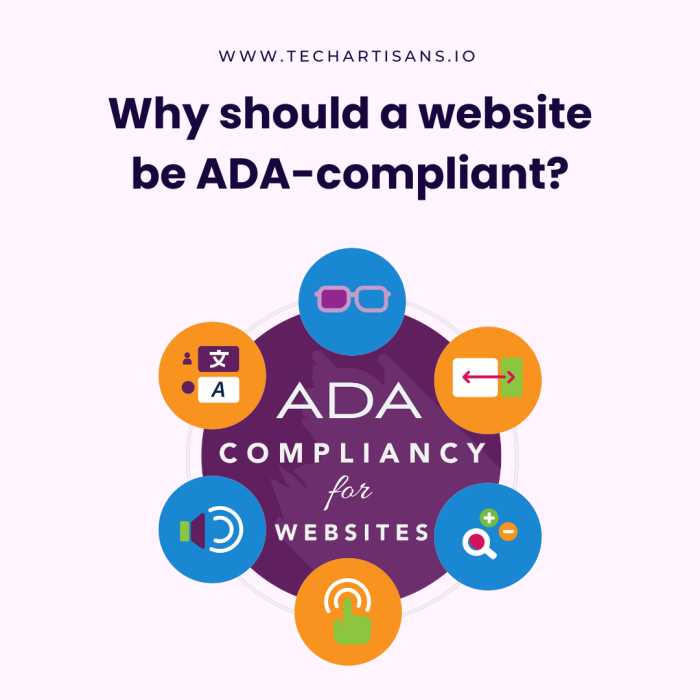
A website should be ADA-compliant for it to be accessed by disabled or special people. The following may be the reasons a website must be ADA-compliant.
- It helps disabled people to navigate through a website much more easily. Considering that such people are entitled to this accessibility as a basic human right and also by law under the ADA compliance act, this is the right thing to do.
- It helps to prevent the website from being sued legally.
- It will help to prevent the business and the website from huge sums of fines or lawsuits and will also accommodate the very valued disabled potential customers.
For more on how to avoid a traffic drop after a website redesign, which can include making a site ADA-compliant, see this resource.
-
ADA Compliant
of a website will open a huge market that was previously untapped. Disabled people will now consider buying from the business or navigating through the website if it is ADA-compliant.
- ADA compliant website will enjoy a better reputation and more potential audience,
- ADA-compliant websites will enjoy much better website accessibility.
Web Content Accessibility Guidelines
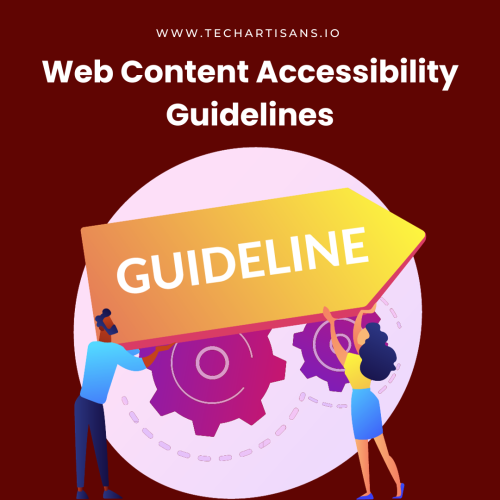
As described before, ADA means the Americans with disabilities act. WCAG means Web Content Accessibility Guidelines. While the overall nature of both of these terms is the same, the difference lies in the legality.
The ADA Compliance Act is a federal law mentioned under section 508. The Web Content Accessibility Guidelines (WCAG) is the list of guidelines for website accessibility and is civil rights law.
WCAG compliance means that the website is following the guidelines for content accessibility and is up to the standards set and mentioned by the World Wide Web Consortium (W3C).
To delve deeper into these guidelines, consider reading about Web Content Accessibility Guidelines.
The Disabilities That Affect Access to the Web
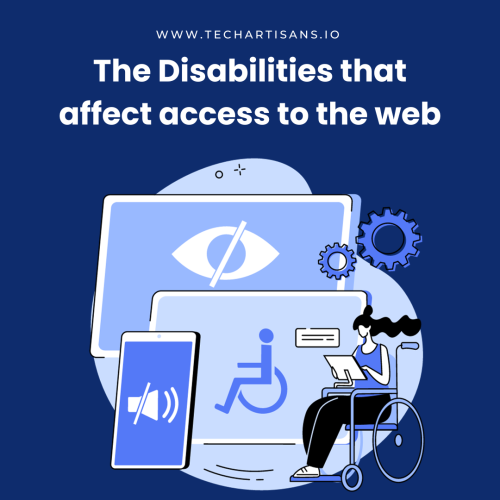
What is an accessible website? Should your website be ADA-compliant? And what reasonable efforts do website owners make in order to minimize accessibility issues? How can they increase web content accessibility?
To answer these questions, one must first understand what are the disabilities that can affect access to the web. World Wide Web Consortium (W3C) answers this question as follows:
All the disabilities that affect web accessibility are included in this list. These disabilities may be:
- Visual
- Speech
- Auditory
- Physical
- Cognitive
- Neurological
Following assistive technologies or software that can be used to minimize ADA compliance issues and make a website ADA compliant.
- Screen Readers software.
- Screen Magnifiers software.
- Voice Recognition software.
- Reading and writing assistance software.
- Cursor enlargement software.
Having these facilities makes a website ADA compliant and increases overall web accessibility. For example, visually impaired users can listen to an audio version of a book. Similarly, people with motor disabilities can search by audio instead of typing.
Learn more about accessible web design here.
Is ADA Compliance Mandatory?
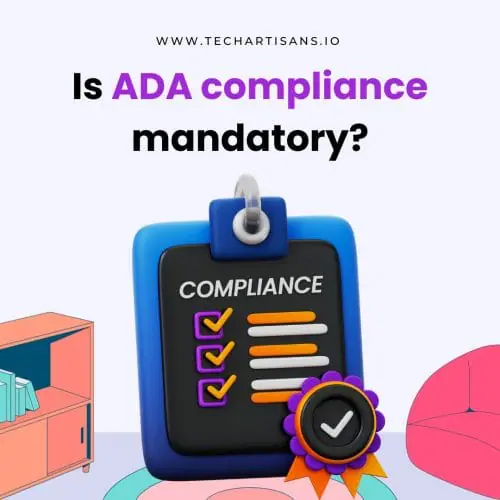
The answer to this question, due to the reasons mentioned above, is yes. ADA compliance is necessary. Not being ADA Compliant will not only endanger your website to costly lawsuits and hefty fines, but it will also stop the website from tapping into a very large market share.
Dealing with these lawsuits and paying these fines is not only costly, but it also damages the reputation. When people come to know that a business, an organization, or a website doesn’t care about such people, the reputation takes a toll, and anyone who feels empathy for such people will stop connecting with the website or the organization.
As you would have seen a physical location used by businesses and organizations is ADA-compliant in the physical world. Allocating special parking spaces and wheelchair ramps, for example, allows better accessibility.
In this era, digital accessibility is as important as physical accessibility. Accessible web design is no more a matter of choice, it’s a matter of necessity.
People with disabilities don’t navigate through such websites and don’t buy from such businesses. This affects the overall reputation of the organization whether it be a government or a private entity.
To understand the importance of digital accessibility, read about website features that enhance user experience.
What Kind of Websites Must be ADA Compliant?
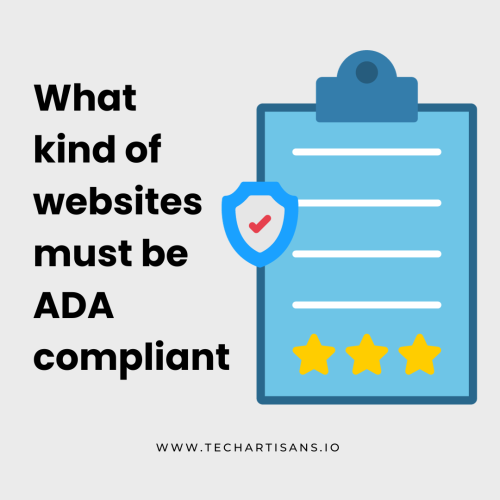
ADA requires any website owned by a state or local government, or a business to be ADA-Compliant.
A business website and websites owned by commercial entities are considered places of public accommodation. These places of public accommodation are required to follow accessibility laws, to improve their web accessibility so that visually impaired people, or people with cognitive disabilities, for example, can access the web content.
Similarly, federal websites or websites owned by state and local governments must be up to compliance standards.
In this regard, a private business and a state and local government must take reasonable measures, according to the industry trends, to fulfill the legal requirements to make its site ADA compliant.
For further insights into this topic, take a look at how to choose a web hosting provider, which can influence accessibility.
Title II and Title III of ADA Regulations
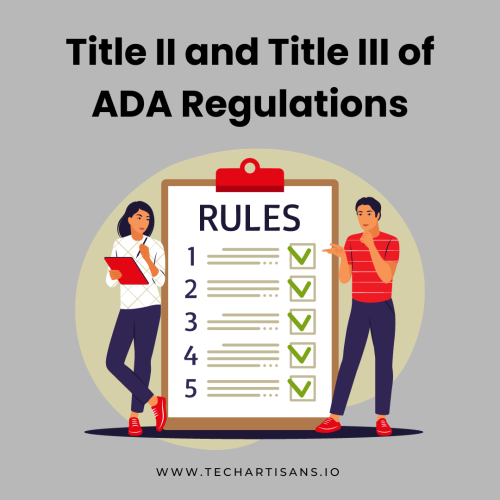
ADA Title II and ADA Title III define the kinds of websites that must be ADA-compliant.
ADA Title II requires the websites that are run or funded by the government to fully adhere to the ADA compliance act whether or not they are provided with the funds for this purpose, but usually, they are.
ADA title iii requires websites run by businesses (places of public accommodation) to ensure that the entire site is ADA-compliant.
These are the Titles of the ADA compliance activities that are used to tackle ADA violations.
Lawsuits Filed
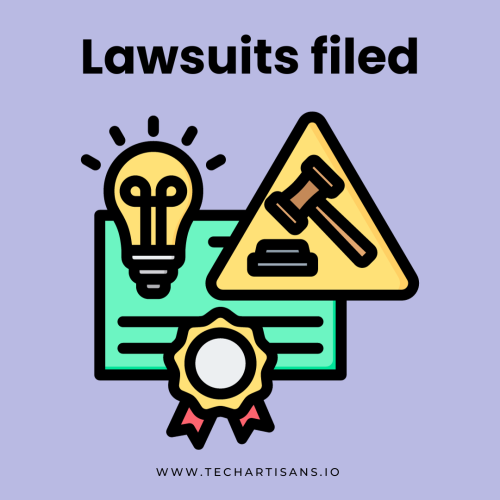
Accessibility lawsuits are filed mostly under ADA title ii and ADA title iii. These lawsuits are mostly filed by people with disabilities, people close to them, or other NGOs working for their rights.
2021 saw a 15% increase in these kinds of lawsuits as compared to 2020. These were mostly against the companies that were sued before for the very same reason. So in order to avoid such a demand letter or a lawsuit, while designing web pages on which ADA applies, a web designer must abide by the web content accessibility guidelines issued by the W3C.
ADA compliance for websites is beneficial for everyone and is not a choice, it’s a legal and moral requirement. ADA compliance increases web accessibility.
Consequences of a Website Not Compliant With the ADA
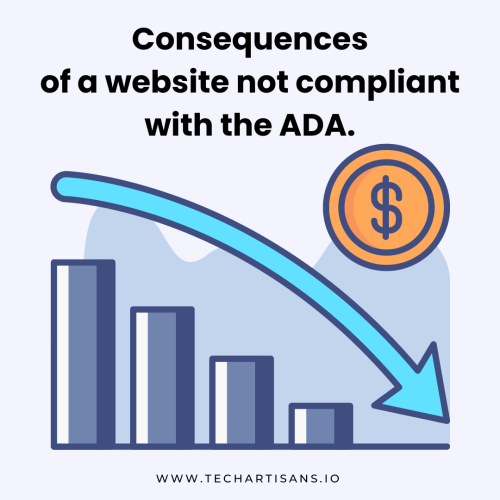
If a website is not compliant with the ADA, it will face consequences that may be legal, or financial. Either way, not following these guidelines is not recommended at all for the websites.
1. Reputation Damage
Considering your physical business is not accessible by disabled people, not only you can be sued for this very fact, you can actually lose a lot of good potential customers for your business.
Just like the physical world, the digital world now needs to be optimized for every person. Every person must have reasonable accessibility to web content and information. If a business website, which is considered a place of public accommodation, and a government website which is owned or funded by the government, are not in compliance with the ADA, their reputation will inevitably take a toll. So an organization of this nature must make its website ADA-compliant.
2. Legal Issues
If a website is legally required to abide by the ADA regulations, and it is not abiding by the law, the ground is set for lawsuits. A lawsuit may be filed by a person or an NGO against that website for not working on its accessibility. Such lawsuits, apart from being very embarrassing, tend to be expensive too.
Dealing with such legal matters is a delicate matter and the organization in charge of that website will spend time fighting a legal battle, paying the legal fees to lawyers, and in case of losing the lawsuit, paying the plaintiff.
All of these resources could be used to build a better and more accessible website in the first place and avoid all these unnecessary and time-consuming legal battles.
3. Financial Loss
It goes without saying that such Legal issues and reputation damage bring financial losses to them. But apart from that, even without these two, a website that is not accessible to disabled people will lose a big share in whatever market they are working in.
Such people will simply not go to these websites and such websites will inevitably bear financial losses.
To Sum it Up
A website, if owned or funded by a government, or a business entity (defined and explained in Title ii and Title iii) must be in compliance with the ADA. Being in compliance means that this website is following the web content accessibility guidelines (WCAG) provided by the W3C.
This enables disabled people to navigate through that website easily and access their content which is their legal right. Just like physical places of public accommodations, websites too, need to be accessible to disabled people. So a website not only SHOULD, but it MUST be ADA compliant.

